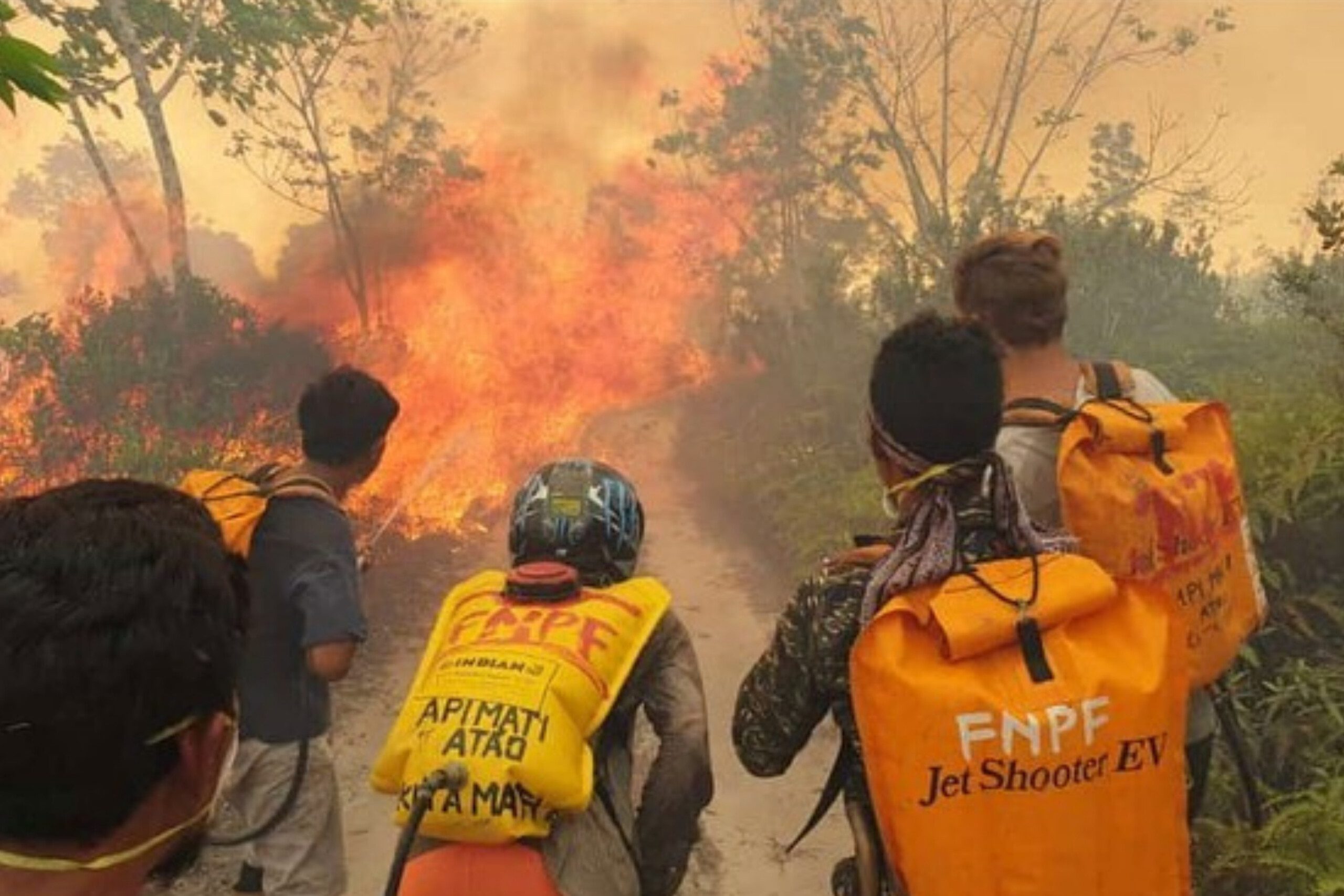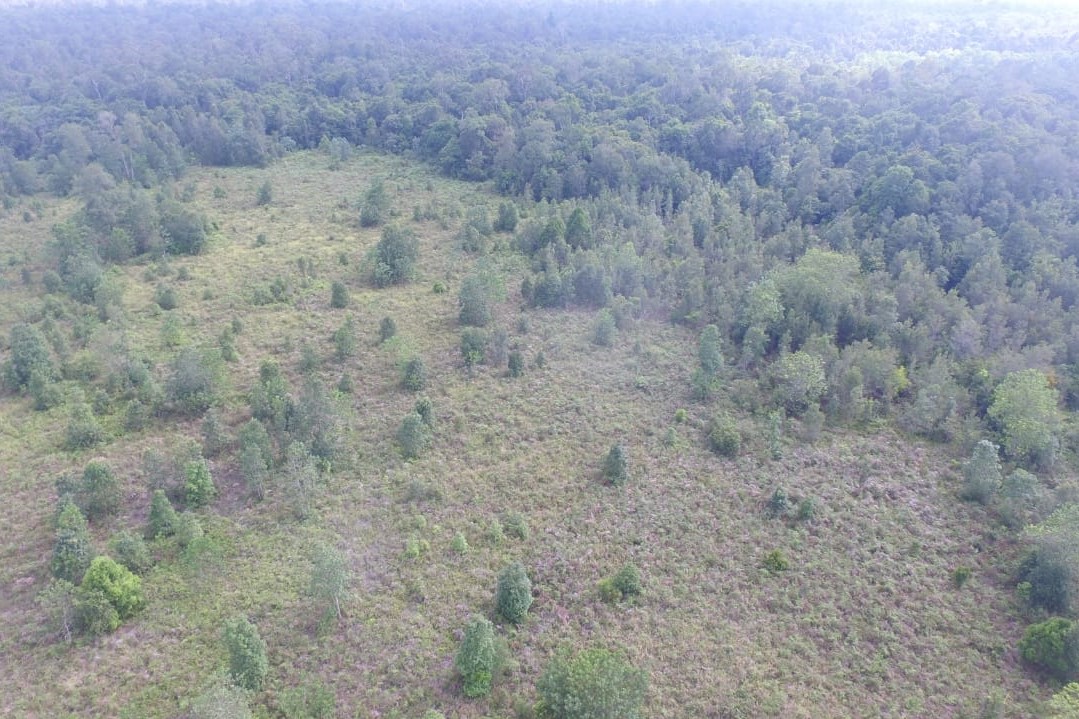KALIMANTAN: HABITAT
Friends of Nature, People and Forests is helping to restore the native forests of Kalimantan. Our team work in Tanjung Puting National Park, the largest national park in Southeast Asia, and Lamandau River Wildlife Reserve. In Tanjung Puting, our reforestation sites are at Pesalat and Beguruh, we also have an agroforestry demonstration site at Jerumbun.
Some of the things our team do every day include:
- Planting new saplings in reforestation sites to increase the density and diversity.
- Post-planting monitoring and maintenance. For three years after replanting, we look after the young saplings, replacing any that haven’t survived, as well as cutting back weeds. After three years, they are strong and large enough to grow independently.
- Fire patrolling. Farmers, and those illegally farming in the park, use slash-and-burn methods that are the main cause of fires. Constant fire monitoring and prevention are necessary. Thanks to our relationship with the community they help us monitor, prevent and extinguish fires.
- While patrolling the forests our team collect seeds and seedlings to take back to our nursery and the village cooperative nursery.
- Caring for seeds and seedlings in our nursery.
- Looking after the park infrastructure, including a conservation education center and camping ground, on behalf of the park’s management.
- Educating visitors, volunteers and the local community about the challenges and goals of our conservation projects.
This work in Kalimantan is supported by our generous donors, including the Humane Society International (Australia), Taronga Foundation, Boeing, Save Indonesian Endangered Species, and Eco Future Fund














PESALAT
Pesalat, 45 minutes upriver from Tanjung Harapa or Sekonyer village, is our longest-running site. This was an area of traditional slash-and-burn farming before the park’s expansion in 1984.
When we arrived the land was severely degraded, cleared of trees and overrun by imperata grass, an aggressive weed. Despite being surrounded by secondary forest, the natural forest couldn’t regenerate because of the grass.
Over the last two decades, our focus has mainly been on reforestation of the dry areas and we’ve replanted over 50 hectares.
We initially plant 400 saplings per hectare. Then for the next three years we monitor and maintain the saplings, planting more every day to increase diversity and density and replace any that haven’t survived.
BEGURUH
This site is a mix of dry land and wetland peat swamp. Like Pesalat, it was heavily degraded, with imperata weed and blade grass preventing forest regeneration. Over the past 15+ years, we’ve planted and nurtured hundreds of thousands of saplings across many hectares, both in the wetlands and on dry land.
Reforestation of a wetlands brings lots of challenges. The area is swampy most of the year, making access difficult, so planting is limited to the dry season. Saplings need to grow tall enough to survive when the water returns. Fires are another major threat, especially with the underlying peat. Once ignited, peat can burn for months or even years, only extinguished by sustained heavy rain.
Before we started replanting, we spent five years experimenting and developing a planting strategy to overcome these and other challenges.